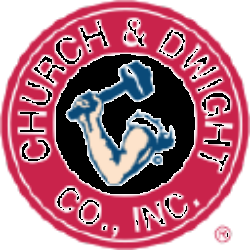Overall, Church & Dwight displays strong business quality with a solid historical performance and diverse portfolio, but faces challenges related to brand dependence. Future prospects are promising, particularly in e-commerce and international markets, though the company must navigate competitive pressures and specific category declines.
Analysis Date: January 31, 2025
Last Updated: March 11, 2025
Trailing Twelve Months (TTM) values provide a view of the company's performance over the last year.
Graham Value Metrics
Benjamin Graham's value investing approach focuses on finding stocks with a significant margin of safety between their intrinsic value and market price.
Intrinsic Value
Estimated fair value based on Graham's formula
$37.65
Current Market Price: $104.81
IV/P Ratio: 0.36x (>1.0 indicates undervalued)
Margin of Safety
Gap between intrinsic value and market price
-178.0%
Graham recommended a minimum of 20-30% margin of safety
Higher values indicate a greater potential discount to fair value
ROE: 13.033820459290189
ROA: 2.1298870889666897
Gross Profit Margin: 45.18347497175419
Net Profit Margin: 9.583926904750209
Trailing Twelve Months (TTM) values provide a view of the company's performance over the last year.
Solid Return on Equity
The return on equity (ROE) of 13.03% reflects the company's efficient use of shareholder capital to generate profits.
Moderate Net Profit Margin
The net profit margin of 9.58% is relatively modest and may indicate pricing pressure or high operating costs that could affect overall profitability.
About Profitability Metrics
Profitability metrics measure a company's ability to generate earnings relative to its revenue, operating costs, and other relevant metrics. Higher values generally indicate better performance.
Return on Equity (ROE)
Measures how efficiently a company uses its equity to generate profits
13.03%
10%
15%
Higher values indicate better returns for shareholders
TTM (as of 2025-04-16)
Return on Assets (ROA)
Measures how efficiently a company uses its assets to generate profits
2.13%
3%
7%
Higher values indicate better asset utilization
TTM (as of 2025-04-16)
Gross Profit Margin
Percentage of revenue retained after accounting for cost of goods sold
45.18%
20%
40%
Higher values indicate better efficiency in production
TTM (as of 2025-04-16)
Net Profit Margin
Percentage of revenue retained after accounting for all expenses
9.58%
8%
15%
Higher values indicate better overall profitability
TTM (as of 2025-04-16)
Strong Liquidity Ratios
With a current ratio of 1.70 and a quick ratio of 1.24, CHD demonstrates solid liquidity, showing its ability to cover short-term liabilities with its short-term assets.
Low Debt Levels
0.41
Debt to Equity Ratio
A debt-to-equity ratio of 0.41 indicates that the company maintains a conservative leverage profile, reducing the risk of financial distress.
Limited Cash Reserves
The cash ratio of 0.73 suggests that while the company can cover short-term liabilities, it may not have a significant buffer in cash reserves for unforeseen expenses.
About Financial Health Metrics
Financial health metrics assess a company's ability to meet its financial obligations and its overall financial stability.
Debt to Equity Ratio
Total debt divided by total equity
0.41x
1.0x
2.0x
Lower values indicate less financial leverage and risk
Less than 1.0 is conservative, 1.0-2.0 is moderate, >2.0 indicates high risk
Q4 2024
Current Ratio
Current assets divided by current liabilities
1.70x
1.0x
2.0x
Higher values indicate better short-term liquidity
Less than 1.0 is concerning, 1.0-2.0 is adequate, greater than 2.0 is good
Q4 2024


